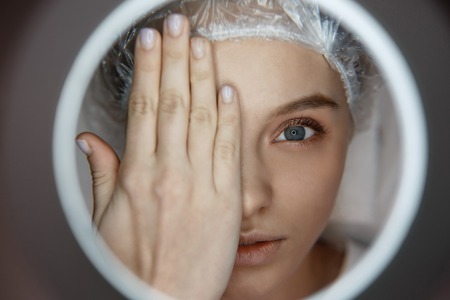Introduction to Facial Fillers in the UK
Facial fillers have become an increasingly familiar feature on British high streets, with clinics from London to Manchester offering subtle enhancements and rejuvenating treatments. In recent years, the demand for facial fillers has soared among people of all ages, driven by a desire to look refreshed and maintain natural beauty. However, as these procedures gain popularity, so too do questions and misconceptions surrounding their safety, effectiveness, and the kind of results British patients can expect. This guide aims to explore the myths and truths about facial fillers, providing clarity for those curious or considering treatment in the UK’s unique cultural context.
2. Common Myths about Facial Fillers
Facial fillers have gained immense popularity across the UK, but with that comes a fair share of myths and misconceptions. As someone who has personally explored non-surgical enhancements and spoken to both practitioners and patients in London clinics, I find it important to set the record straight. Let’s debunk some of the most common myths British patients encounter when considering facial fillers.
Myth 1: “Fillers Always Look Unnatural”
This is perhaps the most persistent myth. Many Brits fear ‘pillow face’ or overdone lips, often seen in exaggerated tabloid stories. In reality, when administered by qualified professionals, fillers can be beautifully subtle—restoring lost volume and enhancing natural features without making you look “done.” The best results are often invisible to others; you just look fresher and more rested.
Myth 2: “Fillers Are Only for Celebrities or the Wealthy”
The association of fillers with celebrities on red carpets or reality TV is strong, but facial aesthetics are now mainstream across the UK. From busy mums in Manchester to professionals in Birmingham, people from all walks of life choose fillers for their confidence-boosting effects. Clinics offer a range of options and payment plans, making treatments more accessible than ever.
Myth 3: “Fillers Are Unsafe in the UK”
Safety concerns are understandable, especially given media reports of botched procedures abroad. However, the UK has robust regulations for injectable treatments. When you choose a reputable clinic with GMC-registered doctors or NMC-registered nurses, your treatment is held to high standards. Always check credentials and ask about the type of filler used—it should always be CE-marked for safety and quality.
Quick Comparison: Myths vs Facts
| Myth | Fact (UK Context) |
|---|---|
| Fillers always look fake | Natural-looking results are achievable with skilled practitioners |
| Only celebrities get fillers | Fillers are popular among everyday Britons from all backgrounds |
| Fillers are unsafe here | The UK regulates medical aesthetics strictly for patient safety |
A Final Note on British Attitudes
The British approach to beauty values subtlety and authenticity. If you’re hesitant about looking “overdone,” rest assured—modern filler techniques prioritise enhancement rather than transformation. Ultimately, education and open conversation help us move beyond outdated stereotypes and embrace safe, personalised choices in aesthetic care.
![]()
3. The Facts: What Facial Fillers Really Do
When it comes to facial fillers, there’s often a swirl of misinformation that can leave anyone feeling apprehensive. However, the real story is rooted in science and professional standards—especially here in the UK. Dermal fillers are gel-like substances (most commonly hyaluronic acid) injected beneath the skin to restore lost volume, smooth lines, or enhance facial contours. Unlike what some tabloid headlines suggest, when performed by a qualified practitioner regulated by the General Medical Council (GMC), the results are subtle and natural-looking.
Fillers work by attracting water molecules, plumping up the targeted areas such as cheeks, lips, or under-eye hollows. The typical outcome isn’t a dramatic transformation but rather a refreshed and more youthful appearance. Most British patients report looking like a well-rested version of themselves—think less ‘overdone celebrity’ and more ‘you on your best day’. The results can last anywhere from 6 to 18 months depending on the type of filler used and the area treated.
Safety is paramount in the UK. Only licensed medical professionals with specialist training should administer fillers; this greatly minimises risks such as infection or uneven results. Clinics are legally required to follow strict hygiene and consent protocols, giving you peace of mind throughout your experience. If you’re considering facial fillers, always seek out practitioners listed on official registers like Save Face or the Joint Council for Cosmetic Practitioners (JCCP).
In summary, facial fillers, when delivered by regulated British professionals, offer a safe and effective way to enhance your natural beauty without compromising your authentic self. The evidence is clear: with proper care and expertise, the risks are low and satisfaction rates are high among UK patients.
4. Navigating British Regulations and Practitioner Standards
When considering facial fillers in the UK, understanding the strict regulatory environment is essential for your safety and satisfaction. Let’s unravel the layers of British law, highlight what makes a practitioner truly qualified, and share how to spot a reputable clinic—because beautiful results begin with informed choices.
The UK’s Regulatory Framework: What You Need to Know
Unlike many countries, the UK has implemented rigorous standards around non-surgical cosmetic treatments, including dermal fillers. While fillers are currently classed as medical devices rather than prescription medicines, new legislation under the Health and Care Act 2022 is bringing even tighter controls. These changes aim to protect patients from unqualified providers and unsafe practices.
Key Regulatory Bodies
| Regulatory Body | Role |
|---|---|
| Care Quality Commission (CQC) | Regulates clinics offering surgical procedures or those involving prescription-only medicines |
| General Medical Council (GMC) | Registers and regulates doctors performing aesthetic procedures |
| General Dental Council (GDC) | Registers dentists qualified to offer facial aesthetic treatments |
| Nursing and Midwifery Council (NMC) | Regulates nurses administering injectable treatments |
| Joint Council for Cosmetic Practitioners (JCCP) | Voluntary register promoting best practice in non-surgical aesthetics |
Selecting a Qualified Practitioner: Your Checklist
- Medical Background: Choose practitioners registered with GMC, GDC, or NMC.
- Insurance: Check for up-to-date professional indemnity insurance.
- Training: Confirm advanced training in facial anatomy and injectables.
- Consultation: Expect a thorough consultation discussing risks, benefits, and realistic outcomes.
- Aftercare: Ask about follow-up support in case of complications or concerns.
Spotting a Reputable Clinic: Red Flags vs. Green Lights
| Red Flags | Green Lights |
|---|---|
| No visible credentials or registration numbers Pressure sales tactics No medical consultation prior to treatment Lack of clear pricing or aftercare policies Poor hygiene or ambiguous premises address |
Credentials displayed clearly Transparent consultation process Detailed aftercare advice provided Registered with CQC or relevant body Sterile, welcoming environment |
Your Safety Comes First
The world of facial fillers can be dazzling but knowing that the UK upholds high standards should give you peace of mind. Prioritise practitioners who respect these regulations; not only will your experience feel more reassuring, but your results will likely be all the more satisfying. After all, true beauty flourishes where trust and expertise meet.
5. The Experience: What British Patients Can Expect
Embarking on the journey of facial fillers in Britain is both an emotional and aesthetic experience, shaped by the high standards and unique expectations of local patients. From the moment you walk into a reputable clinic, you’ll notice a warm yet professional atmosphere that puts your comfort at the forefront. The typical patient journey begins with a thorough consultation—an integral step where British practitioners take the time to listen, understand your goals, and assess your facial features with an artistic eye.
Consultation: A Collaborative Process
During the initial appointment, expect open, honest dialogue about your concerns and desired outcomes. British clinicians often prioritise natural results; they will guide you through options and provide realistic advice grounded in both medical expertise and aesthetic sensibility. It’s not uncommon for patients to bring photos or reference celebrities, but you’ll likely be encouraged to celebrate your individuality rather than chase fleeting trends.
The Treatment Day
On the day of your treatment, clinics maintain strict hygiene standards and use advanced techniques tailored to British preferences for subtle enhancement over dramatic change. Practitioners will carefully map out injection points, ensuring symmetry and harmony with your existing features. Most patients describe the process as surprisingly comfortable—especially with numbing creams—and find the actual injections quick and precise.
Aftercare: Thoughtful Follow-Up
British aftercare often includes a detailed rundown of dos and don’ts post-procedure. You’ll receive guidance on minimising swelling or bruising (think cool packs and avoiding vigorous exercise), along with reassurance that minor side effects are normal and temporary. Clinics frequently offer follow-up appointments to monitor progress and address any concerns, reflecting the UK’s patient-focused ethos.
Emotional & Aesthetic Impact
Many British patients report a boost in self-confidence following their treatment—a subtle refresh that feels authentic rather than artificial. There’s a quiet pride in maintaining a “well-rested” look that draws compliments like “You look great!” rather than questions about what’s changed. This understated approach to aesthetics is woven into British culture; it values personal enhancement while respecting one’s natural beauty.
Overall, undergoing facial fillers in Britain is less about transformation and more about refinement—a supportive process rooted in trust, artistry, and genuine care for each individual’s wellbeing.
6. Cultural Perceptions and British Beauty Standards
When it comes to facial fillers, British attitudes have historically been reserved, with a strong emphasis on natural beauty and subtlety. In recent years, however, the perception of non-surgical enhancements is evolving rapidly across the UK. This shift is partly driven by increased access to reliable information, more visible results among public figures, and changing social attitudes that encourage self-expression and self-care.
The British Approach to Aesthetics
Unlike some countries where dramatic transformations are celebrated, British beauty standards continue to value understated elegance. Most people in the UK seek treatments that enhance rather than alter their features. The prevailing mindset is: “I want to look like myself—just fresher.” This approach means that skilled practitioners focus on subtle tweaks, ensuring results are harmonious with one’s natural facial structure.
Discretion and Authenticity
There’s an inherent British fondness for discretion—openly discussing cosmetic procedures remains less common than in other cultures. Patients often want their treatments to be undetectable to others, reflecting a wider cultural value placed on authenticity. Many Brits consider it important that any enhancement appears effortless and not immediately obvious.
Evolving Attitudes Among Younger Generations
The younger population in Britain is helping to normalise conversations around aesthetics. Social media platforms have played a significant role in demystifying facial fillers, making them seem less taboo and more accessible. Yet even among this demographic, there is still a preference for ‘tweakments’—small, strategic adjustments rather than extreme makeovers.
Respecting Individuality
A key aspect of British beauty values is respect for individuality. There’s a growing recognition that beauty does not adhere to a single standard; instead, it’s about enhancing what makes each person unique. As such, reputable clinics in the UK will always conduct thorough consultations to ensure treatments align with patients’ personalities and lifestyle.
In conclusion, while myths about facial fillers linger, British cultural values are shaping a new narrative—one that balances innovation with tradition and encourages confidence without compromising authenticity. Understanding these nuanced perceptions can help patients make informed choices that honour both their personal aspirations and the understated charm so quintessentially British.
7. Making Informed Choices: Your Guide to Safe and Beautiful Results
Embarking on your facial filler journey can be both exciting and daunting, especially if you’re new to the world of aesthetics. As a British patient, it’s essential to approach this process with confidence and clarity. Here are some practical tips and advice tailored to help you make informed decisions, ensuring results that are not only safe but also beautifully subtle—very much in line with British beauty ideals.
Do Your Homework
Before booking your appointment, invest time in researching qualified practitioners. In the UK, look for professionals registered with reputable bodies like the General Medical Council (GMC) or Save Face. Read reviews, ask friends for recommendations, and don’t hesitate to request before-and-after photos of previous patients. Remember, trust is key—never feel rushed into treatment without having all your questions answered.
Set Realistic Expectations
It’s easy to get swept up by social media trends or dramatic transformations, but British beauty sensibilities often favour a more understated approach. Have an open discussion during your consultation about what’s possible for your unique features. A good practitioner will help you understand the likely outcomes and suggest a plan that enhances rather than alters your natural look.
Embrace Subtlety: The Hallmark of British Beauty
Less is often more when it comes to facial fillers in the UK. Many British patients prefer results that are refined and harmonious, avoiding anything too obvious or “overdone.” Ask your practitioner about techniques that focus on gentle rejuvenation—a touch of volume here, a softening of lines there—so you leave looking refreshed, not transformed.
Plan for Aftercare
Proper aftercare is crucial for both safety and satisfaction. Your practitioner should provide clear instructions on what to expect post-treatment, including managing swelling or bruising and when you can return to normal activities. Don’t be afraid to reach out if you have concerns during your recovery; communication fosters peace of mind.
Your Confidence, Your Choice
The decision to have facial fillers is deeply personal. Take your time, trust your instincts, and always prioritise safety over speed. By being thoughtful and well-informed, you’ll be perfectly positioned to achieve beautiful results that reflect both your individuality and the timeless elegance associated with British aesthetics.


